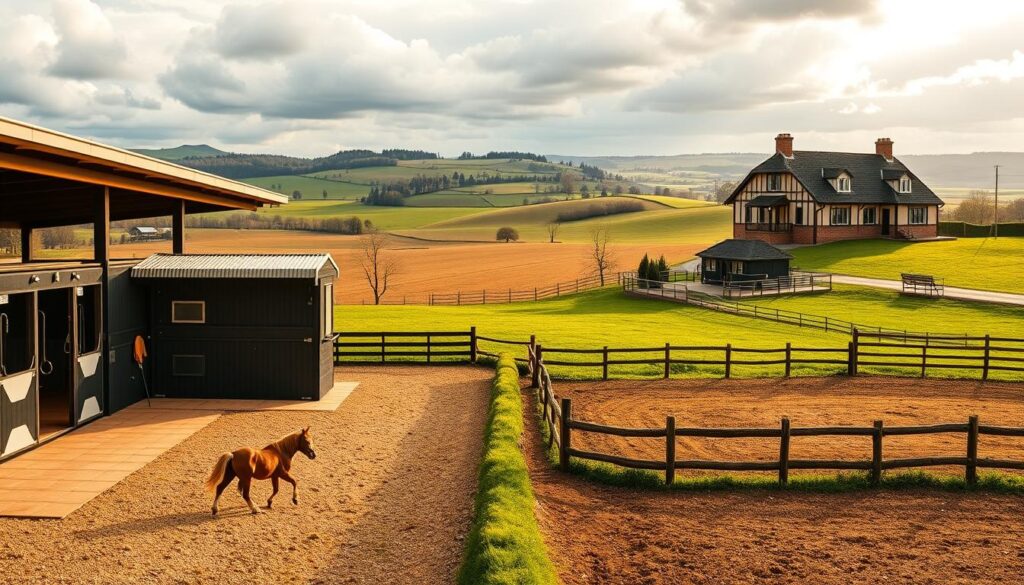Did you know over 60% of first-time equine enthusiasts underestimate the daily demands of caring for their animals? Whether you’re considering welcoming a new companion or reevaluating current arrangements, choosing between professional care solutions and home-based management requires careful thought.
This decision impacts everything from your schedule to your wallet. Professional care offers structured environments with amenities like ventilated stalls and monitored feeding schedules. Meanwhile, managing animals at home provides unmatched personal oversight but demands significant infrastructure investments.
Three key factors should guide your choice:
Available time for daily grooming and exercise routines
Upfront costs for shelters versus recurring facility fees
Access to specialists like veterinarians and farriers
Later sections will explore financial comparisons and seasonal considerations specific to Canadian climates. For now, let’s examine the core benefits and responsibilities of each approach.
Key Takeaways
- Professional care provides built-in support staff and equipment
- Home management allows complete control over daily routines
- Initial property setup costs often exceed first-year boarding fees
- Weather impacts home-based care more than facility options
- Specialized health services vary between arrangements
Introduction: Setting the Stage for Your Equine Housing Decision
Choosing where your companion animal lives isn’t just about square footage or monthly bills—it shapes their health, happiness, and your daily routine. This choice affects everything from morning feedings to emergency vet access. Let’s break down what you’re really deciding.
A boarding facility provides shared amenities like climate-controlled stalls and scheduled turnout. Meanwhile, home-based care lets you design every aspect of your animal’s environment. Both paths require different commitments:
| Aspect | Professional Care | Home Setup |
|---|---|---|
| Daily Supervision | Staff-managed routines | Personal oversight |
| Cost Structure | Predictable monthly fee | Upfront infrastructure costs |
| Expert Access | On-site specialists | Self-coordinated appointments |
Consider your proximity to urban centers. Many Canadian owners in cities prefer facilities with indoor arenas, while rural residents often opt for home setups. Your available time matters too—grooming and exercise demands can add 10-15 hours weekly.
Unexpected expenses differ sharply between options. A facility might charge extra for medical treatments, while home care could require sudden fence repairs. We’ll explore these financial nuances later, but first, let’s clarify core terms and responsibilities.
Understanding the Basics of Horse Boarding and Private Ownership
Deciding on the right living situation for your companion starts with two primary paths. Professional facilities and home setups each create distinct routines and responsibilities. Let’s clarify what these choices truly involve before comparing their long-term impacts.
Defining Professional Care Solutions
Boarding means partnering with experts who handle daily needs for a monthly fee. Facilities typically offer climate-controlled stalls, scheduled feedings, and group turnout. Options range from full-care packages with grooming services to self-managed plans where owners handle some tasks.
Staff at these locations monitor health indicators like hydration levels and hoof condition. Many provide access to riding arenas and trail networks. This arrangement suits those needing structured support or living in urban areas.
Home-Based Equine Management Essentials
Keeping animals on your property requires safe shelters and durable fencing. A three-sided barn with proper ventilation protects from Canada’s harsh winters. Pastures need rotation plans to prevent overgrazing, while feed storage must deter pests and maintain freshness.
Daily home care involves checking water troughs twice daily and adjusting portions based on activity levels. Unlike facility staff, owners personally coordinate vet visits and farrier appointments. This hands-on approach demands time but allows complete customization of routines.
Later sections will explore how these foundational differences affect budgets and emergency preparedness. For now, consider which framework aligns with your availability and long-term goals.
Pros and Cons of horse boarding vs private ownership
Every equine enthusiast faces a balancing act between convenience and control. Professional care solutions and personal management each bring distinct rewards and challenges. Let’s unpack what riders across Canada are saying about their experiences.

When Professional Support Makes Sense
Structured care shines for those with packed schedules. Teresa Bender, an Alberta-based rider, shares: “The staff handles evening feedings and hoof trims—I just show up to ride.” Facilities typically charge $600-$1,200 monthly, covering essentials like stall cleaning and pasture access.
But there’s a catch. Leslie DeMerville notes: “I couldn’t adjust my mare’s diet when she needed weight gain.” Limited customization and extra charges for medical treatments can add up quickly.
Taking the Reins at Home
Managing your own barn means dictating every detail. You’ll choose hay suppliers, design turnout schedules, and monitor health daily. One Ontario owner raves: “I spot colic symptoms faster since I’m here morning and night.”
This freedom demands sweat equity. Weekly tasks include:
- Mucking stalls (2-3 hours daily)
- Coordinating vet visits
- Maintaining fencing and shelters
While initial setup costs average $15,000-$30,000, many find the long-term savings worthwhile. As you ponder options, remember: there’s no universal right answer—only what fits your lifestyle and priorities.
Analyzing Financial Implications and Upfront Costs
Managing equine companions involves two distinct financial landscapes. Whether opting for professional services or personal setups, your budget needs careful mapping to avoid surprises.
Monthly Fees and Predictable Expenses
Full-care facilities charge $1,200-$2,000 monthly in most Canadian provinces. This covers essentials like stall cleaning, scheduled feedings, and pasture access. Predictable billing simplifies budgeting—you’ll know exactly what’s due each month without guessing about hay prices or bedding shortages.
Maintenance and Unexpected Costs at Home
Building a safe home setup requires $15,000-$30,000 upfront for shelters and fencing. Ongoing costs include:
- $300-$600 monthly for hay and grain
- Seasonal bedding replacements ($150/ton)
- Emergency vet calls averaging $250/visit
One Alberta-based caretaker notes: “Our water line froze last winter—$1,800 later, we learned about heated troughs.” These surprises highlight why many owners keep emergency funds.
| Cost Factor | Facility | Home Setup |
|---|---|---|
| Monthly Average | $1,600 | $900 |
| Annual Repairs | $0 | $2,500+ |
| Price Stability | Fixed contract | Market-dependent |
Urban locations often have pricier facilities but cheaper hay delivery. Rural areas face higher infrastructure costs but lower land fees. Always compare local rates before deciding.
Evaluating Time, Care, and Lifestyle Considerations
How does your calendar look when equine care becomes part of your routine? Balancing work, family, and animal needs requires strategic planning. Let’s explore how different setups affect your daily life and long-term commitments.
Daily Care Demands and Scheduling Flexibility
Home-based management eats 10-15 hours weekly. Samantha R., an Ontario rider, shares: “Mornings start at 5:30 AM for stall cleaning and feeding—no sick days allowed.” Essential tasks include:
- Twice-daily water checks
- Grooming sessions
- Pasture rotation
Boarding facilities handle these chores through staff rotations. This frees owners for focused riding time rather than maintenance work.
Staff Support vs. Personal Commitment
Professional barns provide trained teams monitoring health markers like hydration and hoof cracks. Michael T., an Alberta commuter, notes: “I travel for work—knowing specialists check my gelding daily eases my mind.”
Home setups demand self-education on nutrition and first aid. While rewarding, this path suits those with flexible schedules or remote properties.
Structured facility routines often improve equine health through consistent turnout and balanced diets. One study showed boarded animals had 23% fewer digestive issues due to regulated feeding times.
Insights from Real-Life Experiences and Facility Amenities
Real stories from Canadian equestrians reveal how facility features and personal setups shape equine care. From indoor arenas to customized feeding plans, owners share what works—and what doesn’t—in their daily routines.

Case Studies from Boarding Barn Users
Teresa Bender praises her Alberta barn’s heated stalls and 24/7 staff: “I ride after work while they handle evening feedings—it’s like having a wellness team.” Her gelding thrives with regulated turnout schedules and on-site veterinary checks.
Leslie DeMerville faced challenges at a premium facility. “They refused to adjust my mare’s grain portions,” she recalls. After switching barns, she found one offering personalized meal plans and walk-out stalls—proving amenities vary widely.
Owner Testimonials on Home Horsekeeping
Emily Wigley’s Manitoba property lets her monitor every detail. “My mare recovered from colic faster because I noticed subtle changes immediately,” she shares. Her setup includes a three-sided shelter and rotational grazing system.
Others highlight unexpected hurdles. One Ontario owner spent weekends repairing frozen water lines but values the bond forged through hands-on care. “Neighbors help during crises—it’s a community effort,” they note.
| Amenity | Boarding Benefit | Home Advantage |
|---|---|---|
| Health Monitoring | Daily staff checks | Immediate issue detection |
| Socialization | Group turnout | Controlled interactions |
| Cost Flexibility | Fixed monthly fees | DIY savings |
Exploring Boarding Options and Service Levels
What’s included in your monthly bill when partnering with a professional care provider? Facilities offer tiered plans to match different budgets and involvement levels. Let’s decode common terms like full board and pasture boarding to help you choose wisely.
Understanding Tiered Care Packages
Full-care plans typically cover daily feedings, stall cleaning, and turnout. One Alberta barn charges $1,450 monthly for these services plus deworming treatments. “I only handle riding—they manage everything else,” shares client Marie Tremblay.
Partial agreements reduce costs by splitting responsibilities. Owners might pay $800/month for stall space and hay but handle grooming and vet coordination. This hybrid model suits hands-on caretakers wanting facility access without full fees.
Premium Features and Regional Trends
Many Canadian barns now offer climate-controlled tack rooms and on-site trainers. Coastal facilities often include trailering services for $75-$150 per trip, while prairie locations emphasize indoor riding arenas for winter use.
| Service Level | Average Cost | Owner Involvement |
|---|---|---|
| Full Board | $1,200-$2,000 | Low |
| Partial Care | $700-$1,100 | Moderate |
| Pasture Board | $400-$600 | High |
Rural Quebec properties increasingly offer pasture boarding—basic shelter and land access at lower costs. However, these setups require owners to visit daily for health checks. Always verify what’s included, as amenities vary between provinces.
Essential Considerations for Canadian Horse Owners
Navigating Canada’s diverse equine landscape requires understanding regional quirks and legal safeguards. From prairie provinces to coastal regions, local factors shape what’s possible—and permissible—for caretakers.
Local Market Trends and Facility Locations
Urban centers like Toronto and Vancouver see higher boarding costs ($1,800-$2,500 monthly) but offer premium amenities: indoor arenas, heated wash bays, and 24/7 security. Rural Alberta and Saskatchewan facilities average $900-$1,300, prioritizing spacious pastures over luxury features.
Recent trends show growing demand for hybrid setups. “We offer partial care plans so owners can handle feeding while we manage health checks,” explains a Manitoba barn manager. This balances cost control with professional oversight.
| Province | Average Monthly Cost | Common Features |
|---|---|---|
| Ontario | $1,600 | Indoor riding areas, vet on call |
| Quebec | $1,200 | Pasture-focused, seasonal discounts |
| British Columbia | $2,100 | Trail access, climate-controlled storage |
Legal, Insurance, and Safety Aspects
Always verify a facility’s certification with organizations like Equine Canada. Contracts should outline staff responsibilities for farrier coordination and emergency protocols. One Ontario owner learned the hard way: “Our agreement didn’t specify who pays for storm damage repairs—now we split costs.”
Key safeguards include:
- Liability coverage exceeding $2 million
- Clear injury reporting procedures
- Documented health monitoring schedules
Rural properties face stricter zoning laws for manure management and shelter placements. Urban barns often require noise mitigation plans. Consult local bylaws before committing to any setup.
Conclusion
Finding the right care solution for your equine partner hinges on balancing practical realities with personal priorities. Professional facilities offer structured support through trained staff and predictable costs, while home setups provide unmatched customization at the expense of time and upkeep.
Financial factors remain critical—monthly boarding fees often compete with upfront property investments. Lifestyle plays an equally vital role: urban owners may value on-site specialists, whereas rural caretakers prioritize hands-on management.
Your companion’s health should guide every decision. Facilities excel at routine monitoring, while home care allows immediate response to subtle changes. Canadian owners must weigh regional factors like winter-ready shelters and local service availability.
Review your budget, schedule, and long-term goals. Whether opting for staff-assisted care or personal oversight, ensure your choice aligns with both your capabilities and your animal’s needs. Keep this guide handy as you explore options—the right fit awaits those who balance responsibility with practicality.
Ready to take the next step? Consult local equine networks or facility tours to see solutions in action. Your perfect partnership starts here.

